
Digital transformation is not the path of least resistance. It takes real grit to make change happen when stakeholders are accustomed to more traditional marketing. But digital champions are entering the workforce with more conventional brands and driving change at all levels of business.
Empowered by data, motivated by technological change, these early adopters know that digital transformation is inevitable. But the challenge of creating momentum in siloed organizations with deeply entrenched processes can be slow.
*This post was originally published on www.widerfunnel.com on May 1, 2018.* Link to original post:
A big thank you to Lindsay Kwan for interviewing me and making this piece come alive. And thank you to our partners, the incredible WiderFunnel team.
How do you bring a traditional brand up to speed in the digital era?
Johnny Russo is always up for a challenge. As the Associate Vice President of E-commerce and Digital Marketing at Canadian retail giant, Mark’s (formerly Mark’s Work Wearhouse), he set out to transform the business in any way possible when he joined the team in January 2016.
Mark’s, under the umbrella of powerhouse, Canadian Tire, is a retailer that has been traditionally focused on selling workwear apparel. And the brand has become a mainstay in the Canadian economy that is historically based in the resources industry.
But with a background in digital marketing and e-commerce, Johnny had early experience in how digital technology can drive smarter, more data-driven decisions.
He knew that digital transformation — and particularly, the experimentation mindset — can drive the customer experience across multiple channels by creating business agility and driving lifetime customer loyalty to the Mark’s brand.
In this interview with changemaker, Johnny Russo, you’ll learn:
- His own 5 pillars of digital transformation strategy, including People, Partners, Culture, Education, and Change Management.
- Why your digital transformation strategy should focus on a strong foundation of data, while adapting your strategy to new insights and information.
- The 4 core attributes of an agile marketing team, including continuous learning, positivity, adaptability and data literacy — necessities of an iterative, test-and-learn digital strategy.
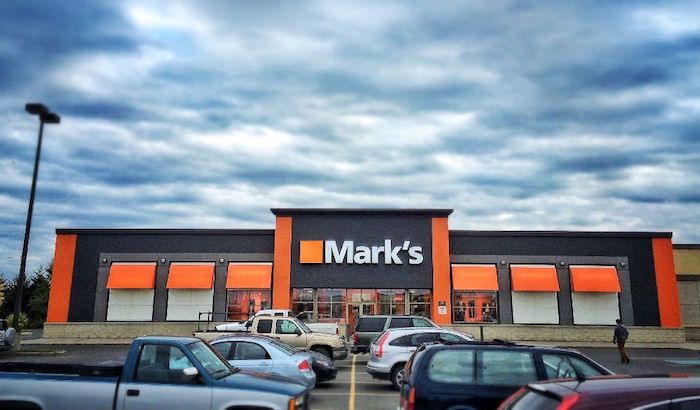
Question from Wider Funnel: When you were hired on with Mark’s, when you first got accustomed to the brand, did you have ideas of what you wanted to achieve?
Johnny Russo: I was hired to lead digital marketing and e-commerce, and when you are coming in new, you want to put your stamp on things, but you first have to understand the culture you’re entering.
What I liked about the Mark’s opportunity was one, they are part of Canadian Tire. They’re one of the largest retailers in Canada, which was one of the check marks for me. If you want to be the best, you might as well be with the biggest. So, Mark’s afforded me that opportunity.
The other thing is that Mark’s is a very traditional retailer. I remember picking up the flyer of Canadian Tire and other Canadian Tire-owned brands like Sport Chek or L’Equipeur and even hearing some of the radio ads and it struck me that they were very traditional in the ways they went about their advertising and marketing.
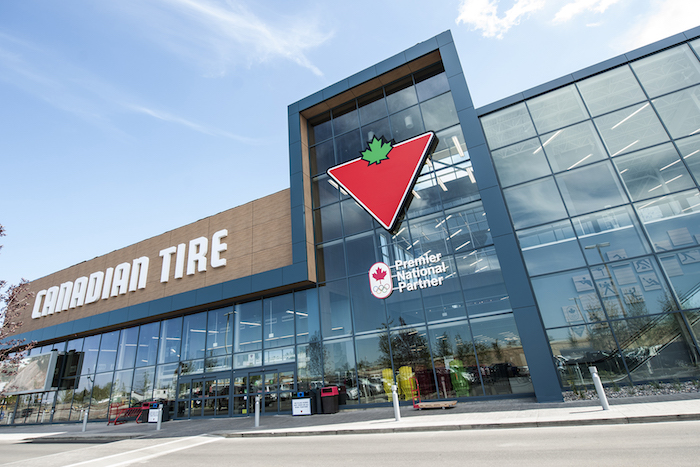
So I thought, what a great challenge to come to a traditional retailer and get them to think of digital. And maybe it wasn’t digital-first at that moment when I was hired on January 2016, but it really has become digital first in so many ways.
We’ve had to fight our way through, don’t get me wrong; it wasn’t just an open door.
It was really testing and learning and trying new things. Getting some quick wins, early. We’ve done a lot of experimentation and a lot of educating along the way.
But that’s what got me excited to come to Mark’s — it was an immense challenge.
Q: Who is the ideal Mark’s customer? And how does digital marketing create a complete picture of that customer?
JR: We had a set target market for numerous years, from 2011- 2017, and we had one target market that we were focusing on, and it was generally related to men, and how men shopped.
In the beginning, you set out to target a certain market who you think is your ideal target market, but it really does evolve. And we’re still evolving our platform, and what Mark’s stands for, and to whom.
But following some of the digital journeys, with data from Facebook and Google Analytics, it’s pretty easy to find out who is shopping with us and who is visiting our website.
On digital, we can test quicker because we don’t have that many advance deadlines, like in print. In print, you have to prepare six to ten weeks for a flyer where you have to optimize your schedules.
Whereas from a digital end, we can come in from the weekend and say, hey our split right now is 70% women, let’s change our targeting this week to focus more on them. Or, women’s Sketcher shoes are on sale, and we can focus on a blend of 80-20 targeting women for that sale. So it’s an ever-evolving customer that Mark’s is looking at.
This year and next year are big for understanding exactly who that customer is. We’re doing a lot of survey NPS scores; we’re getting a lot of feedback from customers and prospective customers. We implemented live chat late in 2017. We use voice-of-the-customer surveys.
We use all these points of customer feedback to understand who that ideal customer is and what exactly they want in the Mark’s brand, in our stores, in our collections, in our experience.
We’re doing a lot of those studies this year and next, and it will play itself out on the customer experience side. And digital is a big part of that.
Q: How else do you keep a pulse on your customer?
JR: We have a lot of things going on. We have focus groups that Canadian Tire, Mark’s, and Sport Chek do, especially to gain benchmarks on, whether our advertising is working, if we are in the right channels, if our brand is known or not known from customers and non-customers.
We’re going to be launching a Mark’s customer panel. Where we ask our own customers if they want to be on a panel where they might test campaigns and view advertising before it goes out to marketing.

We also use ForeSee for customer feedback. It’s an online tool, but it does have a lot of information that has to do with our stores. And we use live chat as a feedback loop.
And while customer service doesn’t report to our group, we work really closely with them on the operations side whether things are going wrong on the site, or the customer can’t check out, or if a promo is unclear. We work really closely with them to get that feedback.
We’re looking at so many variations of data, particularly on the web.
Q: The customer panel is an interesting idea. What inspired that idea?
JR: Yeah, Canadian Tire’s been doing this for a while. They’ve been doing this for the Tested for Life in Canada products. So the idea came out of that. You know, “Why doesn’t Mark’s do one?” So we’ve created an email that is going out in the next couple of weeks, and the hope is that our customers will become ambassadors. So, in addition to some gift cards or other exclusives, they’ll also be in the know. It’s almost like a first adoption, so they will get a kick out of that, we think.
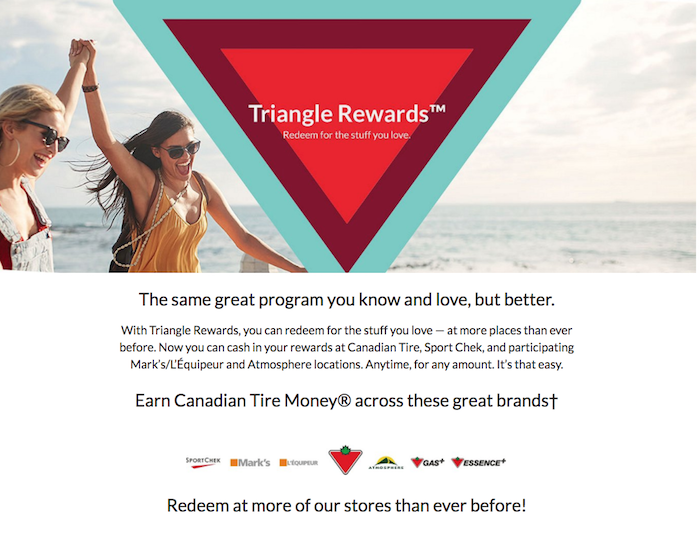
Another piece of data we will have comes from the launch of Triangle Rewards, our company-wide loyalty program. Canadian Tire, Mark’s, L’Equipeur, Sport Chek, Atmosphere — it will be one loyalty program. Talking about the evolution of the customer, we’ll get a lot of data from the Triangle Rewards loyalty program. We all think we know who our customer is, but this will help evolve it, at scale.
Q: Especially as you are launching this new loyalty program, what do you want the customer experience to be?
JR: For us, we want the customer experience to be seamless. By that, I mean, I really hope a customer never knows what channel they’re in. We want it to be a total Mark’s experience if they shop with us, because they’re touching on so many layers.
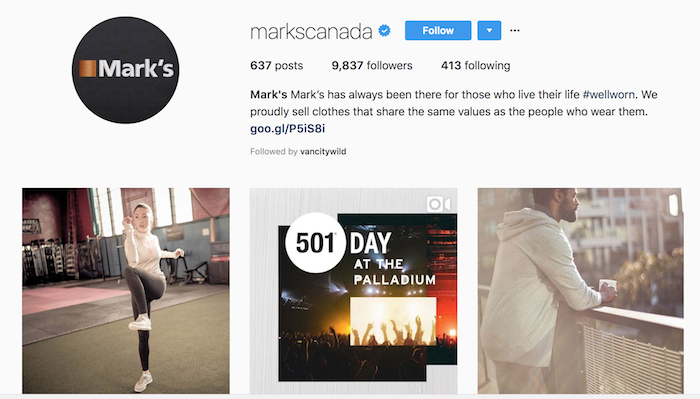
They go online and look at reviews, and then they go into the stores and they buy, and then they get an email to review what they bought… and they’re really using several channels to satisfy their needs. And sometimes they don’t buy that day, and we get that, but we want to create an ideal experience so that they do come back.

We don’t want to be a one-and-done experience, we want them to see the value in the apparel, and in the experience, and in the fact that Mark’s is Canadian. I believe those are all strengths. So, the ideal customer experience is seamless.
Omni-channel or multi-channel — that’s what it is. Omni-channel, for me, is about eliminating channels, internally and externally, so it’s all one seamless experience. A customer is very rarely using one channel to shop. So, the more seamless we can get that experience, the easier it is for the customers.
Q: Digital transformation can be a kind of buzzword and everyone seems to have different definitions. What does digital transformation mean to you and for Mark’s?
JR: For me, there are five core pillars of a transformation; for digital transformation strategy, there’s People, Partners, Culture, Data, Education — and then there’s also an aspect of Change Management and continuous learning that all fit together.
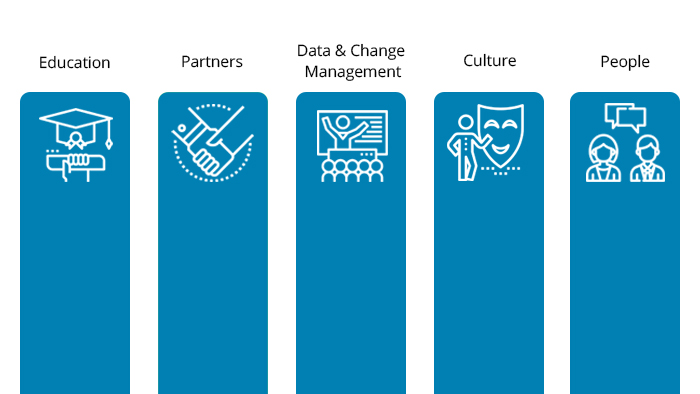
For me, digital transformation is not a buzzword. It’s a real thing that I’ve done at other companies. When I talk to people that are on this quest or journey, these are all the elements that seem to be recreating themselves.
These are the core pillars of the digital transformation and in a year from now, maybe one pillar isn’t there or we have two more pillars that are added.
Culture, for instance, if we were talking about digital transformation four or five years ago maybe culture didn’t play such a role and maybe marketing couldn’t really control aspects of culture. But I believe that marketing has a seat at the table at some of those discussions surrounding company culture, employee culture, customer culture. Like, what do we want the cultures in the store to be? The digital employees we’re hiring, what do we want them to stand for?
So, culture has strongly played a role in digital transformation.
Q: Can you explain what these five pillars of digital transformation mean?
JR: The People pillar is mostly the internal team or the group responsible for digital, marketing, or e-commerce, in our case. It’s the people that you work with and the people that you hire. We’re not talking about the customers at this point. It’s more related to the hiring process and the interview process — the people you hire or the people you have — how to make sure they’re also transforming themselves along the journey.
We like to hire people that are positive and optimistic, embrace change, have a passion for all things digital and be driven by it, and continually learn, inside and outside of work hours. You’re looking at people that don’t necessarily love status quo. People aren’t satisfied with where they are at. People who don’t think they know it all this moment.
So, all that plays a role in the type of people you want to bring on board.
Then, when you talk about the Partners pillar, I’m referring to the external partners — vendors, agencies and technology companies — that you work with. But also your internal partners — the other departments that you need to work with to be truly successful, especially from a retail perspective. We can’t do this alone, we obviously have IT, Operations, Purchasing, Supply Chain, Customer Service, Finance, Store Staff, and HR. These partners all play a crucial role in what we need to transform the business (and culture) digitally.
For the external partners, if you treat your agencies like crap, they’re not going to want to help you transform your business. I believe it’s a two-way street on the partner side and so we’ve adopted a core partner methodology. When we use the term “partner”, it’s not for every vendor that we have, but we do have core partners. They usually follow a certain mindset or pattern of what a partner means for Mark’s.

And the next pillar is Culture, and it’s obviously tied to people. But aspects like moving quickly, being agile, implementing scrum, let’s say — all those things are part of culture.
Mark’s was a traditional retailer so they weren’t really looking at digital first. To go in there and pretend you know a culture when you are on the outside, that would be a huge mistake. We all try to do that and get in there on the first day and think we’re going to change culture but it doesn’t change easily.
But you do need a change in culture to adopt a digital transformation.
Again, it’s a layer of change management that permeates each pillar.
The odds are that there’s a percentage of people at a company that don’t like change. And I’ve never seen digital transformation succeed without change. There’s got to be change. That’s the whole role of a transformation is to change, to evolve, and to adapt.
So, culture plays an important role in digital transformation, and the speed at which it takes place.
The Education pillar refers to employee education, company-wide education, partner education, what you see out in the market. When the purchasing team would want to promote their products or styles, they thought traditional channels first — we need to put this in a flyer, we need to take out a newspaper ad right away. And we were just sitting on the side at times.
We have a huge database of emails. We can be really quick and set up an ad for the purchasers. We can put the product on our homepage or create a landing page and drive traffic to it. And none of that was really known.
People were scared of what they didn’t know, and they didn’t know much about digital. They were dealing with a traditional channel for so long and that was their comfort level. They understood that promoting it there would get them X amount of visibility and X amount of dollars and X amount of impressions. So, we started educating the company on digital.
We first had the Digital 101 series in 2016. It was an introductory level to all things digital marketing, and how we could help their business. What we wanted to communicate was: Here are all these things we do — and it’s like a buffet style of choices. What do you guys need help on? Because we can help you. Especially with the agility that our team has and the channel, in general, has, if your category is struggling, we can probably find some budget to create some Facebook ads or Google Display Network ads pretty quickly. We can send an extra email, or give your category more visibility throughout the site.
I think a lightbulb started going off throughout the purchasing team and throughout the organizations, in the fact that digital could actually help them. It’s not just a buzzword.
Q: Do you now hold the education summits regularly?
JR: After the first summit, we got a lot of feedback and one of them was six hours was way too long to do them. So point taken. We’ve scaled them down in terms of how long they are. They are usually 2-3 hours, but we go deeper and deeper in terms of subject matter as we go. We’ve done three in total and they’ve been very successful. We’re continuing to find ways to not make it stale.
In the last two years, we’ve really come a long way to bring digital to the table, and to also bring data to the business. I’ve been in meetings and they’re asking about certain brands and how they perform. And we come back in three seconds of looking at Google Analytics with the results: what gender is buying what brands; What the conversion rate of certain pages and categories are; What the top-selling styles are online in a given week or month.
Pretty fundamental things to pull up in Google Analytics, but they love knowing we have this data, and can get it to them so quickly.
They’ve been impressed with the quickness of data, whereas on the traditional side you have to wait a bit longer for that information.
Q: Do you do other education activities besides the summits?
JR: One other thing we did was we knew Google Analytics was going to be central to everyone’s role and I want our team to 1. Be educated on data; 2. Use it; and 3. Build out their careers.
For the most part, there are a lot of millennials involved in digital transformation so it’s not a shock that our team is made up of mostly millennials. And you’ve got to figure out what each individual wants. Everyone wants certification and education (they’re all driven to pursue great things in their career), so we made Google Analytics certification mandatory.
Last July 2017, our entire team got certified. And some other people on other marketing teams also wanted to be certified. And 95% of the team passed on the first try. It was rewarding to see that. We all prepared and we had a work-back schedule for three months to get ready for that day, and we did it all in the same time, in the same room. And everyone got certified.
You need confidence in yourself and your team to carry out these education summits or to actually be a leader. I don’t want it to be myself or our managers to only be involved in meetings, to be the experts; I want our whole team to be experts in digital. Whether you’re in an elevator, or at the gym, or outside the office, and they’re talking about Mark’s and what they’re doing digitally — I want them to be the experts.
We also have digital lab sessions every month for the entire digital marketing and e-commerce team. And we go through different topics. It might be someone working on affiliates and that person will share what affiliate marketing is with the rest of our team.

Or merchandising, we’ll show how products are photographed and edited and put online, and how product descriptions come to life; How reviews work and function; What the top five search engine optimization tactics are this year. So, we’ll have these lab sessions for our team to really educate people, after they, in turn, are educated.
We’re always trying to change things up and seeing what works. And changing things before it gets a bit stale or dry.
Q: That’s really interesting. Your education program seems like it’s not just about developing skills. It’s about creating a passion and drive so people continuously get better. Is that the case?
JR: That’s one of our core principles of hiring and you’ve said it perfectly. It’s not just about giving them skills where they come in and they have a whole list of tasks for them to do and then they leave. There has to be some kind of passion for doing this work and there has to be some kind of want to do this work.
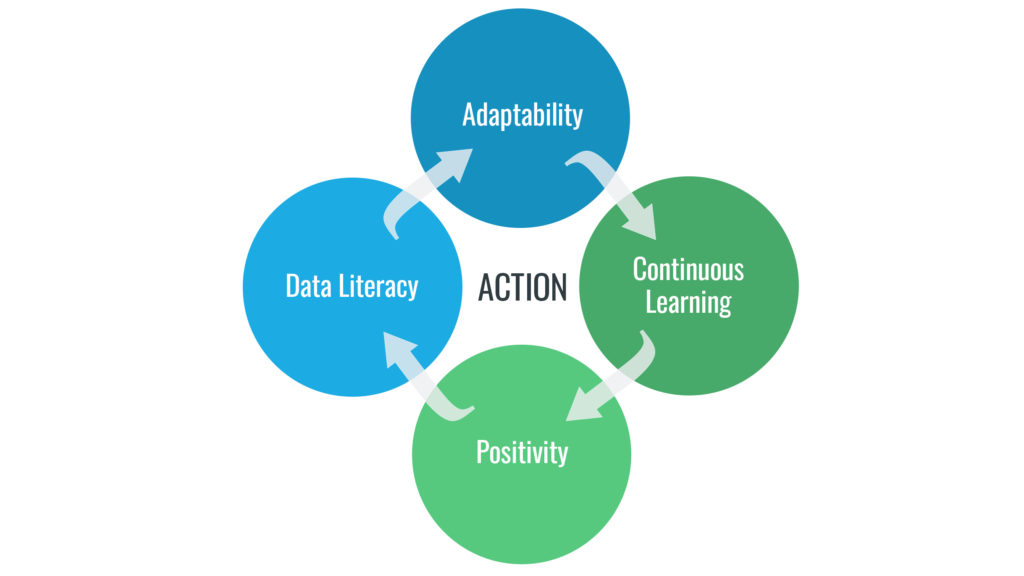
If you want to come in from 9-5 and just do your job, and not learn outside of work, you know pick up a book, or read a blog, or watch Ted Talks, or understand the recent Google updates, this is not the industry for you. And the team we are building is not for you.
I do look for four core principles in our candidates, besides experience. The most important principle is continuous learning. There has to be an appetite for continuous learning, and wanting to learn. The minute you give up or say you pretty much know everything, I think you’re going to fail.
And they have to be positive. People being negative goes back to culture. Does anyone like a negative culture, or a “we won’t try because we’ll fail” culture?
Negative people can’t change culture. Positivity is something we look for when interviewing and when hiring. We need that positive energy to carry forward such enormous tasks and enormous changes.
And adaptability (i.e. embracing change). Someone might be working on a project today, and tomorrow it completely changes because of market forces (think Google and Search Engine Optimization changes, or Facebook and privacy changes).
We’re seeing these changes mostly in social media. There was a huge plan for organic reach and now, all of a sudden, you almost have to pay to play. So now, there’s a lot of emphasis on paid social media. So, who looks after that: is it digital advertising or PR? We’re looking at this change, and see that employees may have their roles altered and changed. And they have to be able to embrace the fact that roles and jobs are changing, sometimes on the go.
So adaptability is a big thing, because if you just go by your job description, things will fall through. Voice search, for example, that probably was not on job descriptions one or two years ago, but now someone will have to pick that one up.
Q: I love how you tied positivity to change management. What else makes change management such an important piece of digital transformation?
JR:
Change management permeates through each pillar. It has to. For Mark’s, we’re looking at how scrum and agile could actually work in a marketing world.
There are some companies that have figured that out. You hear scrum and agile being talked about a lot in development teams, and IT teams, and the agencies that deal with website development, or product management companies, but you haven’t seen it too much in marketing. That’s something that we’re going to gravitate towards.
Because how do we process all this change and learning, without being efficient? My team is fantastic at multitasking, but sometimes we need to focus or prioritize tasks and programs a bit better. No one is giving anybody more time. There’s a certain amount of hours in a day, so how do we work smarter?
Those are things I truly believe will revolutionize marketing or marketing teams in the next few years. And those organizations first to adapt, will be most prepared. And so I think the foundation has to be an agile methodology.
The other numerous change management principles include how to achieve buy-in, and how to get the right stakeholders to the table.
For that, the data pillar has been really helpful. We try and use data to tell a story. And by that, I mean we don’t just send senior executives a spreadsheet. We try and make sense of it, and tell that story in an easily digestible way.
One of the things we want to do is to create, not quite a newsletter, but we want to create an “update”, that we share with stakeholders, and maybe one day with the entire company.
We haven’t always done the best job of sharing what we’ve done outwardly. So, people might think that something that they said a year ago, hasn’t actually been implemented, and it has. So, how do we communicate that better to people? That’s part of the change management pillar. And part of using data. Because we test a lot.
How do you achieve buy-in? Well, you communicate with people, you make sure their thoughts are heard and their wants are taken seriously.
Q: I’ve heard you refer in past interviews to your digital transformation strategy as a “roadmap”. How did you plan your strategy or did it manifest with the evolution of technology?
JR: Is there a set roadmap? Yes.
Do we like to change it? Absolutely.
Is there a formula for digital transformation? Yes and no. I think there are several, depending on your industry and culture, but you’ll see many of these core pillars over and over again.
Are we at the end of it? No.
Are we in the middle of it? Yes.
When I got here, there was one requirement of the role: deliver growth and profitability to Mark’s. And the second requirement was a longer-term strategic focus and that centered around laying the foundation for a digital transformation.
There is a roadmap and a thought process, but there are certain things that weren’t in our roadmap, but we felt there was a need for it. It’s that scrum and agile marketing focus.
I started in January 2016 and I wasn’t thinking scrum and agile until we realized how many things we have to do and how we need to work a bit more efficiently and communicate better. Especially when you grow your team, and your team has 10, 15, 20+ people, you begin to need some proper (yet agile) processes and frameworks and clearly defined goals.
The best way to characterize it is that our strategy is totally evolving. When we say we want our employees to be adaptable, but our strategy is not adaptable, that is totally wrong. The core pillars are likely to remain the same but the way we got there will probably change. And we are changing.
Like the education summit, maybe it has reached a wall, we have to ask, how do we do things differently and make things better?
That’s something that gets me excited about coming to work every day, is seeing the team and their willingness to change. If something performed well in the past, and we are seeing the results decline, let’s change it up: whether it is the look of the site, or your email strategy. The team has become immersed in this changeability and evolving the plan as we go.
You can be well planned and not want to change because you are well planned, but I think that would be a mistake in 2018 and beyond.
Q: I’m intrigued by the idea of having a strategy to lay the foundation for a digital transformation, but having to adapt to what happens. How does experimentation fit in the digital transformation process?
Experimentation is core to what we are doing because we know we won’t be right on everything.
The word testing can make some people afraid because there is a risk of failure there. From a cultural perspective, we’ve become totally conscious of that because I think if you say testing within our team or with certain partners, we know what it means, but others in the company might not.
We were conscious of this uncertainty and so at certain times, we were looking for different synonyms to use. But the results are really the anchor of that.
The moment you get some small, quick wins, you improve your ability to try riskier “experiments.” Trust grows on your team and you have more flexibility to do experimentation, whether in terms of budget, channel, timing, or so on. Trust grows as that happens and people get more comfortable with the word testing or experimentation.
As marketers, we think we know it all. But testing actually confirms that we don’t. If we have an A/B test, one of them might be wrong. And we’re actually telling our senior executives, by doing this, we don’t know which one will win. We think we know, but at the end of the day, it’s based on data and customer experience and what customers want. It supersedes what our thought process is.
Going back to the pillar of Education, we showed some of the tests that we have done and we put dollar amounts on them, and demonstrated that the site didn’t crash and sales didn’t go down. And performance greatly improved as a result. And a sentence senior executives love to hear is “we increased sales, and they were incremental sales.”
Once, we showed that there wasn’t too much risk in testing, that it actually helped our business, we started to get a lot more buy-in for experimentation. So much so that we’re pulling some of that experimentation to other channels, especially in stores.
We’re sharing some of the wins that we’ve had on digital with stores. We love being part of that conversation. Like, how can we better the customer experience? What can we do in-stores to satisfy a new, younger client? How can we merchandise the stores based on real-time digital data?
Q: When you’ve shared a win with a store, has anything actually trickled down to the way you operate in the physical stores?
JR: It’s really that feedback loop I talked about before. We share some of the feedback we get online through ForeSee that is actually meant for stores and we share it out with our store operations team.
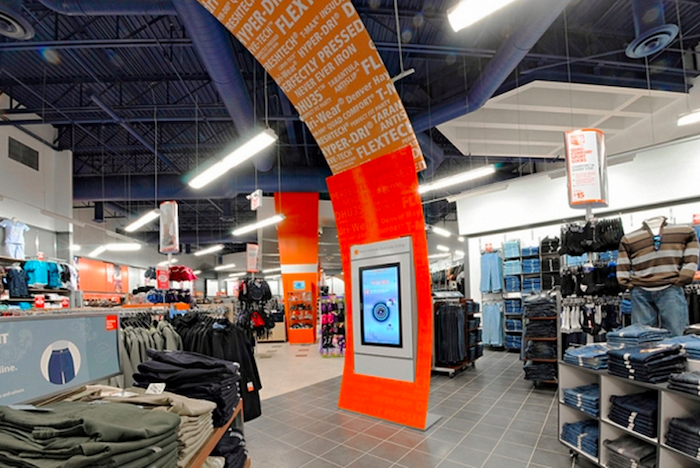
If we look at that data, and it just sits there and we’re like pat us on the back, we’ve done a really good job at sending traffic to stores, that wouldn’t be good. So, how do we get more buy-in? It’s feeding more digital data (there’s that pillar again) to people that need it.
We’re trying to be really helpful to other areas of the business.
Q: Your Ecommerce orders are shipped out from a store. Is that still the case?
JR: Yes, as of right now,100% of our orders are shipped from stores, or picked up from a store using Click & Collect. That’s why we have such a great relationship with operations and the rest of the company, because it’s not like e-commerce just sits over here.
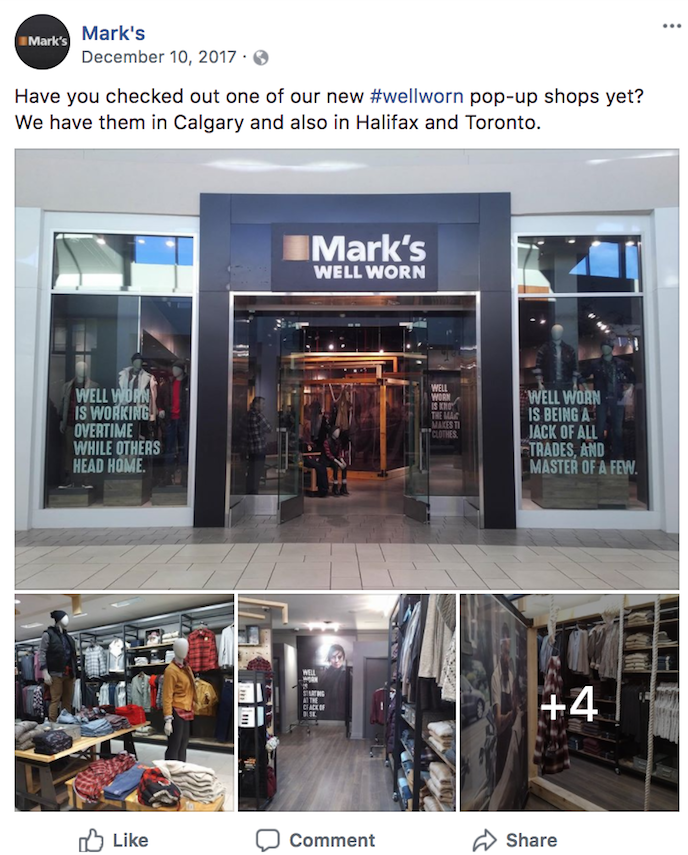
Mark’s e-commerce and digital marketing teams supports all other business departments, including their recent Well Worn pop-up stores in Calgary, Halifax, and Toronto.
At some companies, the e-commerce team is siloed, it’s another channel that fights against stores. And we don’t want to be that team. We really want to work with all our partners. Just like a seamless customer experience, we want a seamless experience internally, so all team members are working together.
Q: It sounds like Mark’s, as an organization, is maintaining a strong connection with the stores, which is interesting, especially considering your digital transformation and strong e-commerce presence. Is this a priority for Mark’s?
JR: Yes, totally. I was in West Edmonton Mall recently, and I love hearing stories about customers. Or, we’ll ask our store associates about our email collection, and the emails that we send and when we send the email. And they sometimes say, well we love it when you send emails early in the morning because we need more traffic in the morning.
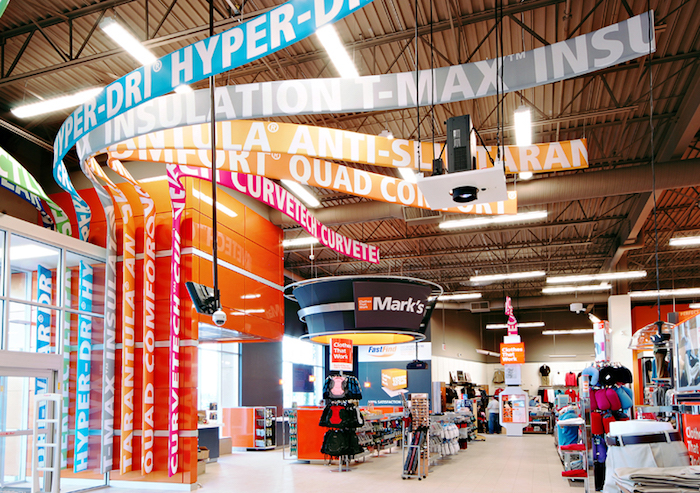
It’s tidbits like that that I love hearing from a store associate, because it may have been overlooked. We may think we know everything, but hearing it from a store perspective and taking it back to the team and saying, yeah, maybe we need to try this out a few times to see what’s best.
Q: One final question, what are your biggest challenges, roadblocks or pain points toward achieving digital transformation for your brand?
Status quo mentality. People, departments, vendors that have always done it a certain way and are reluctant to change. These 6 or 7 words (“I’ve always done it that way”) drive someone in change management crazy [laughs]. Because, saying “we’ve always done it this way” is like holding your hands up and not trying to be better. That’s always a challenge.
There are always going to be people in the company that like the status quo — and I’m not saying they’re always wrong — because maybe it has worked. But especially as things are evolving, and changing so fast, let’s not rest on success. Let’s chase success; let’s try to grow sales in different ways.
And then another challenge is Culture and it goes back to some of the things we talked about — adaptability, change management, positivity — I can’t reiterate it enough, how negative mindsets can crush an experimentation mindset.
Generally, if something is unknown, people are generally against it at first. And when you are negative, what happens is that you’re not only against it, but you permeate that among the culture. They start saying, “They’re going to try this and it won’t work” before the project even starts.
For us, that positivity element is really important. I’m not saying that there shouldn’t be tension on a team. There should be. There is good tension, and pressure is good. I’m not saying this is all flowers, but I do think if people have a negative type of thinking, it might be a roadblock for digital transformation.
People who are positive, generally, they often come with solutions. They don’t come into your office and say woe is us, we can’t solve the issue. They’ll say, “Here is the issue; what if we do this?”
Q: Interesting. We often think of analytical skills when it comes to digital transformation, but attitude is everything. You can’t force people to adopt these changes. But if they have the right attitude, you can teach them; they can learn and adapt. Is that what you envision?
JR: Totally. Within the Education or the People pillar is the use of data and how much more important that is now, than say 10 years ago. I think it’s more important because we have more of it.
Getting lost in data is probably the next great challenge of marketing. But I think if you can prioritize and make stories out of that data, for either the customer or your bosses or to get approvals, you’ll be able to manage. Data plays a huge a role in 2018 and beyond for successful digital transformations.
What ties everything together within these pillars of digital transformation is Action.
The over-analyzing, long, drawn-out approval processes, or the word maybe — you’ve got to say yes or no at times. Trying to be a perfectionist won’t get you there in today’s age. And maybe that changes in 10 or 20 years, and maybe we go back to what it used to be, But I think if you are aiming for perfection, it’s going to take you a long time to get there.
When you test something, you know that perfection is not there or else you would already be there. So, experimentation is admitting that there is something wrong here or something we want to achieve here to a greater degree, so let’s do it.
That action-oriented mindset is going to win.
Speaking of action, please download this worksheet, which can help turn these 5 pillars of digital transformation strategy into action!
Plan your next steps for the People, Partners, Culture, Education, and Change Management pillars with this FREE 3-page worksheet.
What are your opportunities and challenges to achieving your brand’s digital transformation? We’d love to hear your comments in the section below.



https://waterfallmagazine.com
Its like you read my mind! You seem to know so much about this, like you wrote the book in it or something.
I think that you can do with a few pics to drive the message
home a bit, but other than that, this is wonderful blog.
A fantastic read. I will certainly be back.